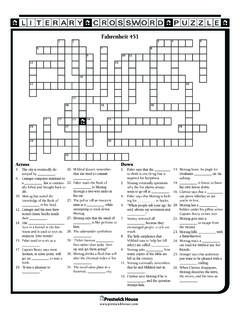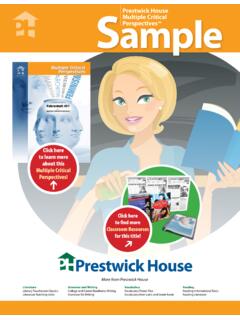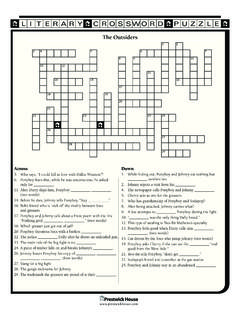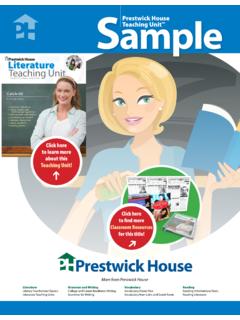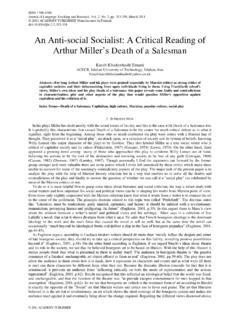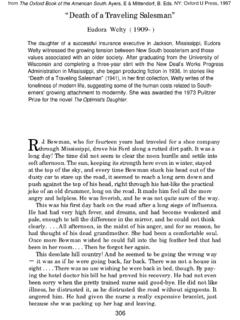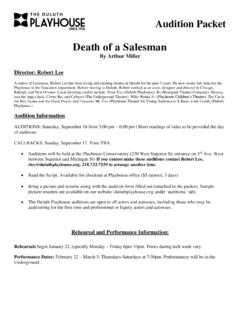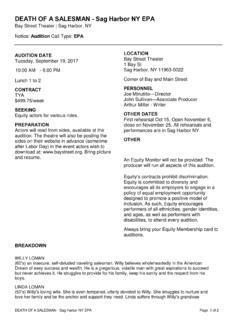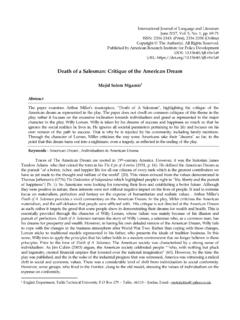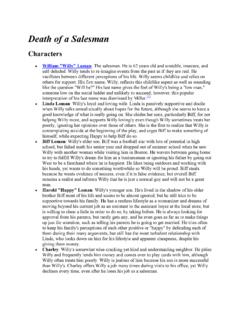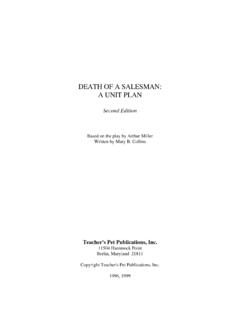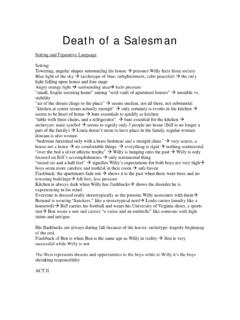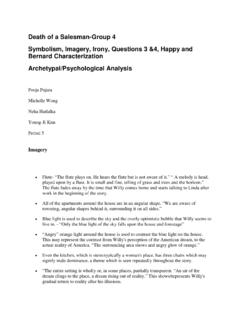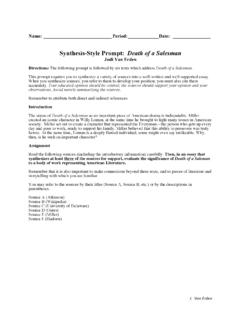Transcription of Death of A Salesman - Multiple Critical Perspective
1 Box 658, Clayton, DE Teaching Arthur Miller s from Multiple Critical PerspectivesDeath of a Salesman Prestwick HousePrestwick HouseItem No. 302763 Teaching Arthur Miller s from Multiple Critical PerspectivesDeath of a Salesman Click here to learn more about this Multiple CriticalPerspectives! Click here to find more Classroom Resources for this title! SamplePrestwick HouseMultiple Critical Perspectives LiteratureLiterary Touchstone ClassicsLiterature Teaching UnitsGrammar and WritingCollege and Career Readiness: WritingGrammar for WritingVocabularyVocabulary Power PlusVocabulary from Latin and Greek RootsReadingReading Informational TextsReading LiteratureMore from Prestwick HouseDeath of a Salesman Teaching Arthur Miller's from Multiple Critical Perspectivesby Rebecca GrudzinaMultiple Critical Perspectives 6 Pr e s t w i c k Ho u s e.
2 In Critical PerspectivesDeath of A SalesmanGeneral Introduction to the WorkIntroduction to Death of A SalesmanDe a t h o f a Sa l eS m a n was written in 1949 and is often regarded as an attack on the materialistic aspect of the American Dream the achievement of wealth and success at the expense of personal integ-rity. It was awarded the Pulitzer Prize for Drama in 1949, the 1949 Tony Award for Best Play, and the New York Drama Critics Circle Award for Best Play the first play ever to win these three major awards. The original production opened on February 10, 1949 at the Morosco Theatre and ran for 742 per-formances.
3 The play has been revived on Broadway three times: June 26, 1975 at the Circle in the Square Theatre, running for 71 performances. March 29, 1984 at the Broadhurst Theatre, running for 97 performances. Dustin Hoffman played Willy. In a return engagement, this production reopened on September 14, 1984 and ran for 88 performances. The production won the Tony Award for Best Reproduction. February 10, 1999 (fiftieth anniversary of the play s original opening) at the Eugene O Neill Theatre, running for 274 performances. This production won Tony Awards for: Best Revival of a Play; Best Ac-tor in Play; Best Featured Actress in a Play; Best Direction of a Play.
4 This production was of the Play The play is divided into three main parts, Act One, Act Two, and the Requiem. Each section takes place on a different day in the present-day (Spring 1949). Act I: night-time Act II: various times the next day Requiem: several days later Much of the family s history, and the events that have led to the current situation and family rela-tionships are revealed through flashbacks. These flashbacks also provide a somewhat objective glimpse of the past to contrast with the family members memories of those same events.
5 Pr e s t w i c k Ho u s e, in c. 15 Multiple Critical PerspectivesDeath of A SalesmanNotes on the Marxist ApproachTH e ma r x i s t a P Pr o a cH t o l i t e r a t u r e is based on the philosophy of Karl Marx, a German philosopher and economist. His major argument was that whoever controlled the means of production in society controlled the society whoever owned the factories owned the culture. This idea is called dialectical materialism, and Marx felt that the history of the world was leading toward a com-munist society. From his point of view, the means of production ( , the basis of power in society) would be placed in the hands of the masses, who actually operated them, not in the hands of those few who owned them.
6 It was a perverted version of this philosophy that was at the heart of the Soviet Union. Marxism was also the rallying cry of the poor and oppressed all over the world. To read a work from a Marxist Perspective , one must under-stand that Marxism asserts that literature is a reflection of culture, and that culture can be affected by literature (Marxists believed literature could instigate revolution). Marxism is linked to Freudian theory by its concentration on the subconscious Freud dealt with the individual subconscious, while Marx dealt with the political subconscious.
7 Marx believed that oppression exists in the political subconscious of a society social pecking orders are inherent to any group of main areas of study: economic power materialism versus spirituality class conflict art, literature, and ideologiesMarxist Approach Applied to Death of A Salesman Pr e s t w i c k Ho u s e, in c. 19 Multiple Critical PerspectivesDeath of A SalesmanActivity OneExamining Willy as the Hero of the Proletariat 1. Divide the class into small Have each group review the scenes below and discuss the questions that follow: Act One, first flashback, beginning, Willy: I been wondering why you polish the and end-ing.
8 What a sensation! Act One, Willy s card game with Charley, beginning, Charley: What re you doin home? and end-ing, Charley: You ought to be ashamed of yourself! Act One, Linda s confrontation with her sons, beginning, Biff: He s got no character, and ending, Linda: He s dying, Biff. Requiem: Especially Biff s speeches Is Willy a failure? What is his true failure? What do the stories of Willy s father, brother, and son suggest about Willy s intended des-tiny? Why would Miller create a character who possesses such carpentry skills?
9 When Linda says, Attention must be paid to such a man, what does she mean by such a man ? Later in this same scene, Willy yells at Biff, Even your grandfather was better than a carpen-ter. What does he mean by better ? What does Linda mean in the Requiem, when she says, He only needed a little salary ? What does Charley mean when he counters, No man only needs a little salary ? Pr e s t w i c k Ho u s e, in c. 25 Multiple Critical PerspectivesDeath of A SalesmanNotes on the Psychoanalytic TheoryTH e t e r m s P s y cH o l o g i c a l, o r P s y cH o a n a l y t i c a l, or Freudian Theory seem to encompass essentially two almost contradicto-ry Critical theories.
10 The first focuses on the text itself, with no regard to outside influences; the second focuses on the author of the text. According to the first view, reading and interpretation are lim-ited to the work itself. One will understand the work by examining conflicts, characters, dream sequences, and symbols. In this way, the psychoanalytic theory of literature is similar to the Formalist approach. One will further understand that a character s outward behavior might conflict with inner desires, or might reflect as-yet-undiscovered inner areas of study/points of criticism of the first view: There are strong Oedipal connotations in this theory: the son s desire for his mother, the father s envy of the son and rivalry for the mother s attention, the daughter s desire for her father, the mother s envy of the daughter and rivalry for the father s attention.

